EWP Elevated Work Platforms
Boom Elevated Work Platform and Mobile Elevating Work Platforms
Elevated Work Platforms (EWPs) are also known as Elevating Work Platforms for obvious reasons. If you are considering buying or hiring one or more, you should really check out the ones currently available from us at Redmond Gary, Australia Pty Ltd. We can build customised EWPs to suit your specialist needs.
How to choose a company that specialises in EWPs
If you have employees who have had little, or no, previous experience of using EWPs, you need to find a company that provides certified training. This training should cover both theoretical; and practical issues. Courses should enable participants to understand the risk assessment procedures for the equipment they work with, and the environments in which they will be working. The main body that regulates the EWP industry is the Elevating Work Platform Association of Australia Inc. (EWPA), click on the link to access the web page. You should choose a company that is a member of this association to ensure you get the best training for your employees.
Product Range
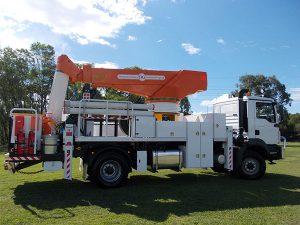
TF13M – Discontinued
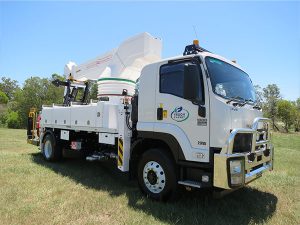
TF14M – Discontinued
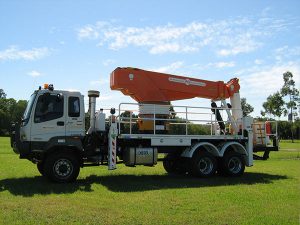
TF16M – Discontinued
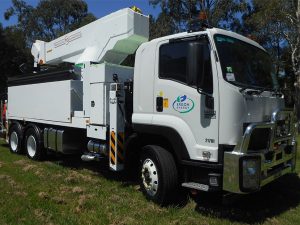
TF17M – Discontinued
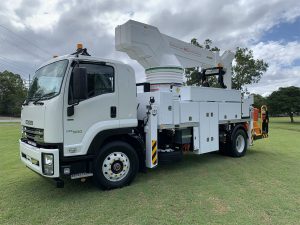
TL14M
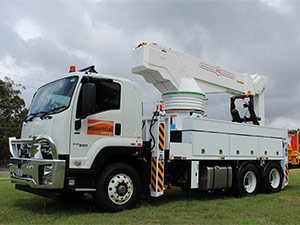
TL16M
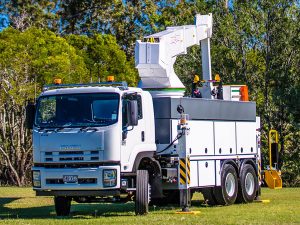
TL17M
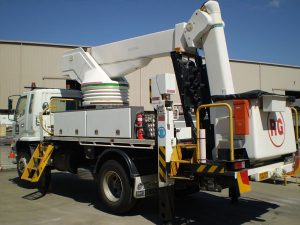
EWP Rebuilds
Product Gallery
All Australian states have to adhere to the Occupational Health and Safety Act (OH&S) and they need to adopt the Work Health and Safety Act 2011. This legislation is in place to protect the health and safety of workers, including those who operate elevated work platforms. Under the OH&S act, employers must provide training, among other things, to ensure that employees’ health and safety at work is safeguarded. They also have a duty of care to their employees and have the responsibility to ensure that any work carried out on their behalf does not put others at risk.
Employers must:
- Provide their employees with a safe working environment.
- Safely maintain plant and structures.
- Maintain safe systems of work.
- Make sure that all plant, machinery and other structures are used safely.
- Provide their employees with adequate facilities, which are accessible.
- Provide training, instruction, supervision and information, to ensure employees understand their duties and health and safety procedures.
- Systematically check the health of their employees as well as the conditions prevalent in the workplace.
In other words, it is necessary to provide proof that employees who operate EWPs have been properly trained in their use. That, in turn means verbal instructions are not enough, because there is no proof that it has been given. There needs to be written evidence. That is where the Yellow Card, or the Operator Training Program comes in. It provides written evidence that training has been given. Employees must also comply with the OH&S regulations and meet the requirements. Suppliers also have a duty to ensure that all equipment is safe to use when used appropriately, according to instruction manuals.
There are actually five different EWP modules for those who undertake a course enabling them to obtain an EWP Operator Licence. As well as a module on transport, there are five training modules which include:
- a vertical lift module (VL)
- a scissor lift module (SL)
- a self-propelled boom lift module (BL)
- a trailer lift module (TL)
- a truck mounted lift module (TM) and
- a transporting load restraint module.
When an employee has obtained a Yellow Card, it provides employers and others with written proof of training. The qualifications can be checked on the Elevated Work Platform Association of Australia (EWPA) website.
All elevated work platforms sold by Redmond Gary comply with the Australian standards. In addition, the company works to international standards, thus ensuring the safety of our equipment. We can supply our customers with specially designed elevated work platforms, as well as a variety of other equipment, such as self-loading cable drums, trailers, pole borers, winches and other mining equipment. Elevated work platforms Australia-based, are just part of our catalogue.
We understand that customers may need to work in the harsh terrain of the outback, one of our ten deserts, or mines, so our equipment is built to deal with the Australian landscape, and whatever it throws at us.
As with any elevated working platforms, mobile elevating work platforms (MEWPS), need to be maintained regularly to ensure that they are safe to use. They are, of course safer to use when working at heights than are ladders, ropes and safety harnesses. They are designed so that workers can have both hands free when working at heights and they offer increased protection for those working on them. They are an excellent alternative to working on scaffolding in the construction industry, and are certainly useful in the agricultural industry, especially in arboriculture.
MEWPs can be used indoors and out, although mostly they are used outdoors, when it is necessary to work at heights. However, if work is being carried out near power lines and cables, special safety precautions need to be taken. Contact with overhead power lines (OHPLs) can prove fatal and can also cause electric shocks and burns. To work anywhere in close proximity to overhead cables, it is necessary to work in conjunction with their owner(s) and ensure that the electricity is cut while work is actively being carried out.
Care should also be taken when working on MEWPS close to underground electric cables. A thorough risk assessment should be made before starting work close to cables, whether above or below ground.
Some workers have died, or been seriously injured in MEWP-related accidents. However, the reasons for such accidents is usually because of negligence while working, or not carrying out an adequate risk assessment. Other causes of accident include the following:
- equipment failure
- failure to follow the manufacturer’s instructions and
- lack of appropriate or adequate training and supervision.
When working in a potentially hazardous situation, it is imperative that all health and safety regulations are adhered to.
Depending on the type job to be done using EWPs, different ones can be chosen. For example, you might need a boom elevated work platform, or, alternatively, self-propelled elevating work platforms.
If work is carried out using one of these work platforms, the operator must have the High-Risk Work Licence if the boom length is 11 metres or more. The operator’s licence must be endorsed with the letters WP (Work Platform) denoting the class of the licence. Although employees do not need a High-Risk Work licence to operate this kind of work platform if the boom is less than 11 metres, employers have a duty to train and give instruction to their workers who operate them.
If an operator is expected to exit an elevated boom platform at a height, to do a particular task, then written authorization must be obtained from the manufacturer beforehand. An operator must be thoroughly trained to do so, before attempting to exit or enter a platform, and a full-body harness (approved) should be worn while doing so. The operator must never climb over the platform guardrails, but use the sliding mid-rail entry or gate. It is dangerous to exit or enter the platform in high winds, those over 28 mph or 45 km/h.
There are many different work platforms to choose from, so a prospective purchaser should not assume that one-size-fits-all. There are industrial stairways with platforms, rooftop crossover platforms, mobile and fixed platforms and tilt and roll work platforms, for example. There are also lifts that can be towed, sometimes known as man lifts, cherry pickers, basket cranes, and hydra ladders. Scissor lifts are a little restricting, as they can only be moved up and down, but if that is all that is needed, then these are ideal for the purpose.
Before purchasing an industrial work platform, it is necessary to do some thorough research and it is best to ask for expert opinions. After all, such equipment is expensive and mistakes are therefore costly. Reputable suppliers will be only too happy to help and advise customers regarding the best equipment for their purposes.
The Australian government has been busy upgrading its training packages, so that they are up to internationally agreed standards. This goes across the board, from interpreting and translating to training to use elevated work platforms. To find out more, access the website of the Australian government’s department of Education and Training by following the link here.
Before a person can operate an elevated work platform, he or she must have received appropriate training. As there are many types of EWP, operators must receive training in how to operate the type of EWP they are expected to use. While undergoing training, the operator must be properly supervised. The supervision should continue until the supervisor believes the trainee is competent to use the EWP. After completing the first training course, operators must undertake regular refresher courses, so that they are up-to-date.
While the onus for health and safety at work is primarily on the employer, employees also have duties to perform while at work. Here are some of the employees’ duties: –
- They must, when they see a hazard, report it to a designated health and safety person or a line manager.
- At all times, workers are obliged to follow the health and safety rules that have been stipulated.
- Workers should use the personal protective clothing and equipment (PPE) provided.
- All accidents and near misses should be reported to the appropriate person or their supervisor.
Mobile platform training is different to training to work on elevated platforms. These are slowly replacing traditional scaffolding and ladders. They are, of course, much safer for workers, as long as they have been trained to use them safely.
Before working at heights on mobile platforms, workers have to complete a training course, or perhaps several training courses, and have the required qualifications. Such qualifications are the EWP Operator Ticket, or the Yellow Card, discussed above.
To be accepted onto the EWP course leading to the EWP operator ticket, all trainees must
- be 18 years old or more.
- have year 10 (minimum) literacy, numeracy and communication skills.
- be able to demonstrate that they can understand, speak and write English.
The states of New South Wales, Victoria and Queensland have different specific requirements as well as the ones listed above.
When attending training courses, all trainees have to wear appropriate clothing, such as long pants, safety boots, and a shirt that is highly visible.
There’s homework to do of course, and trainees will need to study and complete review questions as well as memorise information. This homework is preparation for the written assessment, which trainees need to pass to get their Operator Ticket.
When trainees book their courses, they are obliged to say if English is not their first language. Interpreters can not be present during the formal assessment procedure.
Courses for trainees vary in duration. Some may be for a day, while others may last longer, depending on the course chosen. Classes are typically small, so trainees can have at least some individual attention if they need it.
If an employer wishes to have more than ten people trained together, he or she must contact the accredited trainer, who can then arrange for another, or more, trainers to be made available. This should be done well in advance of the start of the course, to ensure that all trainees can be accommodated.
Want to know more?
Give our team a call at (07) 5594 9844 or Send Your Enquiry Today.

